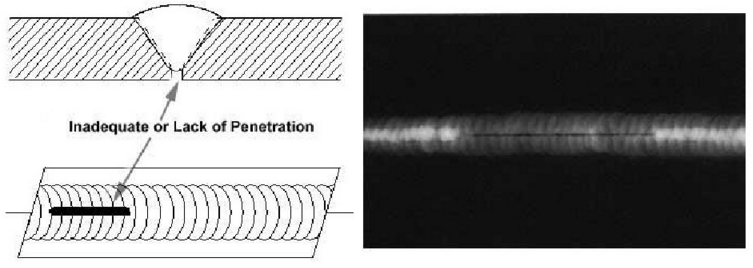1. Welding defect definition
The metal produced in the welded joint is not continuous, dense or poorly connected during the welding process.
2. Common welding defects in the manufacturing process
(1) The weld size does not meet the requirements;
(2) weld surface defects;
(3) The weld metal is not continuous;
(4) The performance of welded joints does not meet the requirements.
3. Introduction to typical welding defects
(1) undercut
Grooves or depressions along the base material of the weld toe due to improper welding parameters or incorrect operation methods. as the picture shows

(2) pit
a local low-lying portion of the surface of the weld or the back of the weld that is formed after welding, as shown in the figure

(3) Not soldered
A continuous or intermittent groove formed on the surface of the weld due to insufficient filler metal.
(4) collapse
In the case of single-sided fusion welding, due to improper welding process, the weld metal is excessively transmitted through the back surface, and the weld seam of the master is collapsed and the back surface is convex, as shown in the figure.

(5) stomata
It means that the gas in the molten pool does not escape before the solidification of the metal during welding, and remains voids formed in the weld. as the picture shows

(6) slag inclusion
The slag inclusion refers to the phenomenon that the slag remains in the weld after welding. as the picture shows

(7) Not welded
It refers to the defect caused by the fact that the base metal does not melt and the weld metal does not enter the joint. as the picture shows

(8) Unfused
It refers to the defect that the weld metal is not melted together with the base metal and the weld metal. as the picture shows

(9) Crack
Refers to the defect that the material is partially broken. as the picture shows

-
 Sales@hata-ndt.com
Sales@hata-ndt.com -
 0086-0371-86172891
0086-0371-86172891










